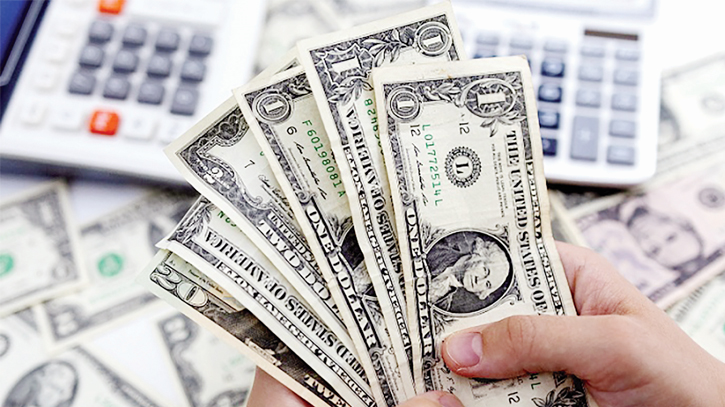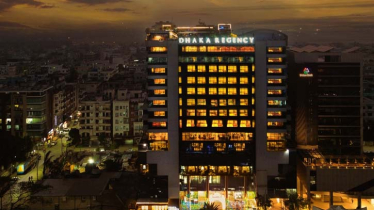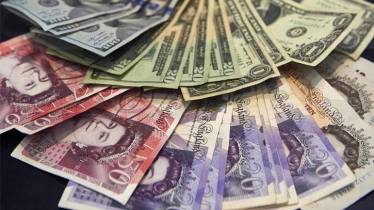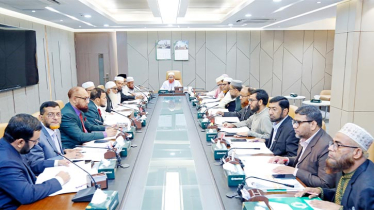
Photo : Collected
The government’s initial boast of a record amount of reserves has suddenly halved. Analysts believe that the country’s economy is at risk. Because, with the current reserves it is possible to meet the import expenses of only three months.
Last Thursday Bangladesh Bank announced the amount of real reserves for the first time according to international standards. At the moment, foreign currency reserves in the country are $23.56 billion. However, according to the central bank’s own calculations, the amount of reserves is still around $30 billion.
Economists said, Bangladesh Bank’s report stated that the actual reserve is $23.5 billion dollars. However, the net is less than 3 to 4 billion dollars. They said contractionary measures have been taken to retain reserves. By keeping them effective, it should create a growth trend. Otherwise, it may soon lead to deep anxiety.
Economists think that many misconceptions about reserves was conveyed to the public. As a result, many felt that money was lying idle. These campaigns were used to fund infrastructure from reserves.
There are also allegations that the government has tried to increase its political image at the regional level by using the reserve money. The government has not yet got back the $200 million loan that was given to Sri Lanka. Another country sought a similar loan. It was also discussed at the government level.
Besides, the Export Development Fund (EDF) has been increased with dollars from the reserves. Many businessmen even sought loans from there. These pressures were created by the promotion of reserves as idle money. At that time, it was assumed that the country has excess reserves.
Although these big initiatives have been taken and messages of hope have been heard from different levels of the government, the reality is different. They feel that the government itself has fallen into its own trap as the actual reserves have come down to half.
For a long time, there was a debate between the central bank, the government and independent research organizations about the amount of foreign exchange reserves in the country. Independent researchers were saying that the authorities are not following international standards in determining reserves.
Recently, the government has signed agreement with the International Monetary Fund (IMF) for financial assistance. They required that the actual reserve should be calculated by June this year. The global lender has approved a loan of $4.7 billion under such conditions.
Meanwhile, some funds have been formed from the reserves. Besides, some projects have been assisted. As a result, the central bank had to report the actual reserves by excluding those amounts. The government has given money to Bangladesh Biman to buy aircraft and pay for the Payra Port project. Besides, the export development fund has been made from the reserve money. As the reserve money was lying ‘idle’, the government decided to use it for various purposes.
Zahid Hussain, former Lead Economist of the World Bank Dhaka office, told The Daily Messenger that the total reserves were shown at $23.56 billion. However, the net or real foreign exchange reserves are $19 to $ 20 billion. With this, it is possible to meet the import expenses of three months.
He said that the concern is that the reserves are continuously decreasing. Many import control measures have been taken to maintain this. Exports were not as bad as expected though. Yet the reserve deficit is not reducing, rather the reserve is continuing to erode.
Dr. Khondaker Golam Moazzem, Research Director of Center for Policy Dialogue (CPD) and economist said, now the reserve situation is in the “red zone”. That’s a concern that’s halved from $46 billion just two years ago.
“We should see whether it will decrease further or continue to increase. If the government can create a gradual growth trend, people will get hope. But if it is negative, it will be a cause of further concern.”
In August 2021, the reserves rose to the highest in the country’s history at $48.04 billion amid the Corona pandemic. But in July of the following year, it fell to $46.5 billion. And in this May 2023, it came down to $30 billion.
Basically, after the corona pandemic, the import cost has increased. As a result, the government claims that the global situation is the reason for the decrease in reserves. In the meantime, when the severe dollar crisis developed in the country, the IMF was approached for assistance. Various austerity measures were taken as a condition of the organization’s loan. Among them, the main topic of discussion was the account of reserves.
Meanwhile, the government has taken many steps to curb imports and spending in the context of a massive dollar crisis. As part of this, the profits made by foreign investors in Bangladesh are not being given to them. Again, in the case of royalty, money (Taka) has been offered in many places instead of dollars.
Besides, many people are doing business in this country with loans from foreign banks. Banks have been requested to extend the repayment period to avoid payment in dollars in their case. Payments to investors in the power sector are being delayed. Besides, the government buys the rest of the fuel from abroad. Car purchases and foreign travel are also restricted.
However, Golam Moazzem thinks that these have not been properly implemented. Stating that now the government can take stronger steps, he said, the confusion that existed among the government, people, investors, donor organizations and all, will have to be resolved. As a result, the right decision will be made in that connection.
Economist Zahid Hussain said that the current reserves, whether they are sufficient for monetary policy management and risk management, is also a matter of concern. He said usable reserves were much less than $30 billion.
“Everyone knew it, even if they didn’t admit it until now. Now we have to see how much reserve there is for immediate use in the crisis moment.”
TDM/SD








